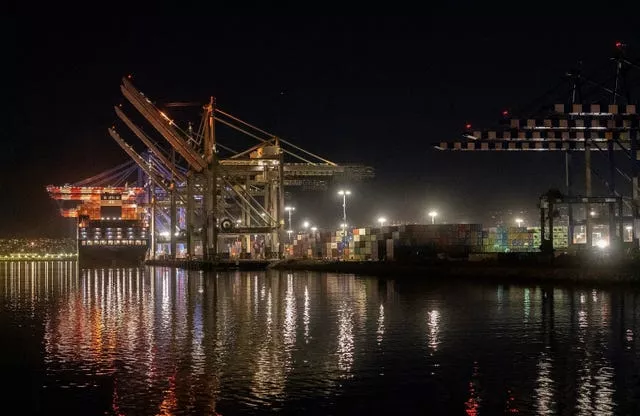Maritime nations have agreed to slash emissions from the shipping industry to net zero by about 2050 in a deal that some experts and nations say falls short of what is needed to curb warming to agreed temperature limits.
Negotiators at the meeting of the UN’s International Maritime Organisation (IMO) in London, seen as key to curb global warming to 1.5C since pre-industrial times, rubber-stamped a deal for shipping emissions to reach net zero “by or around” 2050.
The less firm deadline was agreed to take account of “different national circumstances”.
The plan also calls for shipping emissions to be slashed by at least 20% but aiming for 30% by 2030 and at least 70% but working towards 80% by 2040, despite a push from Pacific nations for more ambitious targets.
Experts calculate the industry must cut its emissions by 45% by 2030 and reach net zero by 2050 to keep on track with the 1.5C goal.
IMO secretary-general Kitack Lim said the deal “is in many ways a starting point for the work that needs to intensify even more over the years and decades ahead of us”.
“With the revised strategy that you have now agreed on, we have a clear direction, a common vision, and ambitious targets to guide us to deliver what the world expects from us,” Mr Lim said to member states.
The German government welcomed the agreement, calling it “an important milestone for ensuring that international shipping makes a fair contribution to reaching the temperature goals of the Paris agreement”.
Transport Ministry spokesman Florian Druckenthaner said Germany had “lobbied massively” for the goal of net-zero emissions by 2050.
Asked by the Associated Press whether Germany feels bound by the new targets, despite the fact that the interim goals are “indicative”, Mr Druckenthaner said: “These are international targets that we have negotiated. As such they are also targets that we support and share.”
Environmentalists are unhappy with the deal, which does not set 2050 as a hard date for net-zero emissions or keep in line with the warming limit set in the Paris agreement.
“There is a clear disparity between its (the IMO’s) goals and those set by the Paris agreement’s crucial 1.5C target – a divergence that we can ill afford,” said Harjeet Singh, head of global political strategy at Climate Action Network International.
One analysis suggests both the less and more ambitious interim targets would see the shipping industry use up its carbon budget – a calculation of the amount of carbon dioxide various industries and countries can emit before global warming limits are breached – by early next decade.
“We do not have the time to wait for regulation or alternative fuels to catch up,” said Diane Gilpin, founder and CEO of Smart Green Shipping. “We need to move with urgency and work with what we have.”
Shipping currently accounts for almost 3% of greenhouse gas emissions, according to the IMO.
A European Parliament report warned that share could increase dramatically by 2050 if steps are not taken to reduce the sector’s reliance on fossil fuels.

A decision on introducing a shipping levy on carbon emissions to help pay for investment in cleaner fuels and technologies and support developing countries’ green ambitions has been deferred.
Simon Bennett, the deputy secretary general of the International Chamber of Shipping (ICS), which represents 80% of the world’s commercial fleet, said the group “greatly welcomes the ambitious agreement” but urged the IMO to agree to the group’s proposal of a voluntary levy on emissions.
Some environmentalists are supportive of the idea of a levy, but say the ICS proposal hampers more ambitious ideas from going ahead.
The IMO’s targets are revised every five years. The previous target was for the shipping industry to cut its emissions by at least half from 2008 to 2050.







